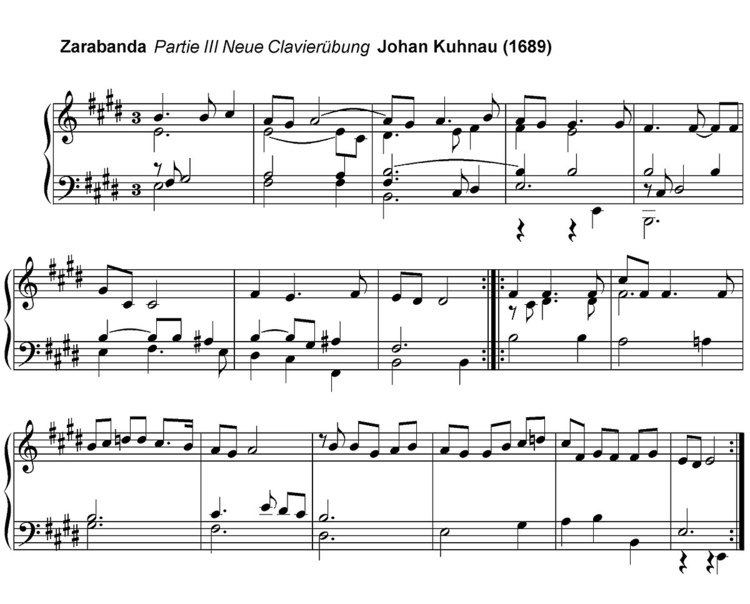 | ||
The sarabande (from French sarabande, itself derived from Spanish zarabanda) is a dance in triple metre.
Contents
History
The dance may have been of Mexican origin evolved from a Spanish dance with Arab influences, danced with a lively double line of couples with castanets. A dance called zarabanda is first mentioned in 1539 in Central America in the poem Vida y tiempo de Maricastaña, written in Panama by Fernando de Guzmán Mejía. The dance seems to have been especially popular in the 16th and 17th centuries, initially in the Spanish colonies, before moving across the Atlantic to Spain.
The Jesuit priest Juan de Mariana thought it indecent, describing it in his Tratato contra los juegos públicos (Treatise Against Public Amusements, 1609) as "a dance and song so loose in its words and so ugly in its motions that it is enough to excite bad emotions in even very decent people". A character in a Miguel de Cervantes farce alluded to the dance's notoriety by saying that hell was its "birthplace and breeding place." It was banned in Spain in 1583 but still performed, even by clerics during the mass and frequently cited in literature of the period (for instance, by Lope de Vega).
It spread to Italy in the 17th century, and to France, where it became a slow court dance.
Baroque musicians of the 18th century wrote suites of dance music written in binary form that typically included a sarabande as the third of four movements. It was often paired with and followed by a jig or gigue. Johann Sebastian Bach sometimes gave the sarabande a privileged place in his music, even outside the context of dance suites; in particular, the theme and climactic 25th variation from his Goldberg Variations are both sarabandes.
The anonymous harmonic sequence known as La Folia appears in pieces of various types, mainly dances, by dozens of composers from the time of Mudarra (1546) and Corelli through to the present day. The theme of the fourth-movement Sarabande of Handel's Keyboard suite in D minor (HWV 437) for harpsichord, one of these many pieces, is featured prominently in the film Barry Lyndon as well as the BBC documentary, Auschwitz: The Nazis and the Final Solution.
Other sarabandes
The sarabande was revived in the late-19th and early 20th centuries by the Norwegian composer Edvard Grieg (in his Holberg Suite of 1884), French composers such as Debussy and Satie, and in England, in different styles, Vaughan Williams (in Job: A Masque for Dancing), Benjamin Britten (in the Simple Symphony) and Herbert Howells (in Six Pieces for Organ: Saraband for the Morning of Easter).
The sarabande inspired the title of Ingmar Bergman's last film Saraband (2003). The film uses the sarabande from Johann Sebastian Bach's Fifth Cello Suite, which Bergman also used in Cries and Whispers (1971).
